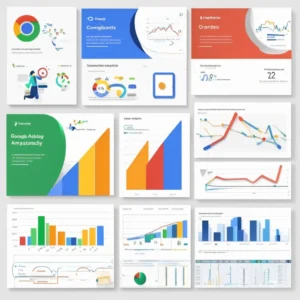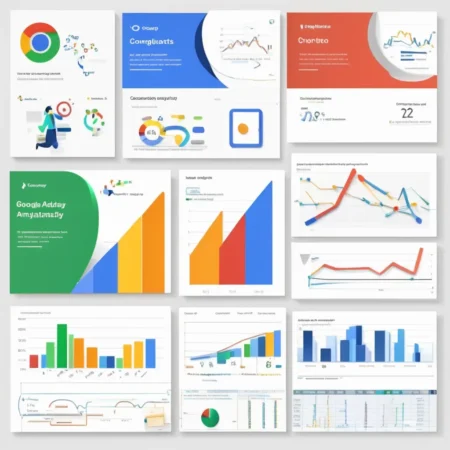Creating a website using WordPress may be challenging, but it becomes much more manageable with the correct platform. WordPress is a top pick among content management systems due to its extensive popularity and solid capabilities. It’s user-friendly and adaptable, with many tools to help you create the website of your dreams. In this detailed tutorial, we’ll walk you through the whole process of constructing a website using WordPress, beginning to end.
Why Choose WordPress?
Let’s first examine why millions of users worldwide choose WordPress before getting into the specifics of creating a website using WordPress. WordPress’s adaptability to various uses and demands is a significant element of its appeal. It can meet your needs, whether you’re creating a corporate website, an e-commerce company, or a personal blog. Even for non-programmers, it’s pretty user-friendly.
Essential Steps for Creating a Website Using WordPress
Installing and creating a website using WordPress and selecting a hosting plan are prerequisites for getting started. A single-click setup of WordPress is a tool offered by several hosting companies that streamlines and expedites the procedure. After installing WordPress, you will have a dashboard to manage your website’s content, functionality, and style. Unlock Success: Essential Steps for Website Creation Using WordPress by Our Expert Design and Development Services.
Choosing a Theme
Regularly updating your WordPress core, themes, and plugins is one of the easiest yet most powerful methods to improve security. Keeping current is essential since developers often issue updates to fix vulnerabilities and enhance performance. To keep your website safe, turn on automatic updates whenever possible and check for updates frequently—link to the official WordPress documentation on updates.
Keep WordPress Core, Themes, and Plugins Updated
Regularly updating your WordPress core, themes, and plugins is one of the easiest yet most powerful methods to improve security. Keeping current is essential since developers often issue updates to fix vulnerabilities and enhance performance. To keep your website safe, turn on automatic updates whenever possible and check for updates frequently—link to the official WordPress documentation on updates.
Use Strong Passwords and Implement Two-Factor Authentication
Weak passwords are among the most popular entry points for hackers trying to breach WordPress websites. You may increase your website’s security by creating complex passwords with unusual characters, numbers, and letters. To provide an additional degree of protection, consider implementing two-factor authentication (2FA). Before accessing a website, users using 2FA must submit two pieces of identification. A login and passcode and an individual code were emailed to their cellphone.

Regularly Backup Your Website
It might be helpful to have a current website backup in case of a security incident or data loss. Establish a regular backup routine to guarantee that your website’s data is accessible and safely kept. For extra peace of mind, consider utilizing a dependable backup plugin that provides alternatives for off-site storage and automatic backups.
Customizing Your Website
Customizing your website to represent your business identity is the exciting part now. Using plugins and widgets, you may quickly alter the look and feel of your WordPress website. The options are unlimited, from inserting contact forms and social networking links to changing colors and adding a logo. Take your time and try out various settings until your website has the look you want.
Adding Content
You can start adding material after creating a website using WordPress configured to your preferences. This includes product listings, blog articles if you have an online store, and pages like About Us, Services, and Contact. Remember to use relevant keywords and meta tags to optimize your content for search engines. Organization and attention to detail can significantly enhance the effectiveness of a website created using WordPress.
Optimizing for SEO
Regarding search engines, search engine optimization (SEO) on your website is essential for attracting natural search traffic. WordPress has several SEO plugins, including Yoast SEO and All in One SEO Pack, that may assist you in optimizing the on-page components of your website, such as headers, meta descriptions, and titles. Optimizing for SEO: Boost Your Website’s Visibility with Our Expert Services. Frequent publication of excellent content and developing backlinks can also help raise your website’s search engine rankings—link to a beginner’s guide to SEO from a reputable source.
Testing and Launching
Ensure everything works properly on your website by giving it an entire test run before launching. This involves ensuring your website is mobile-friendly, testing forms and buttons, and looking for broken links. Now that everything has been checked and you are satisfied with the results, it’s time to create a website using WordPress.
Maintaining Your Website
Creating a website using WordPress is the first step; upkeep is continuous. Update the WordPress core, themes, and plugins to keep your site operating at its best and staying secure. Monitor visitor behavior and pinpoint areas that need work by routinely reviewing your website’s analytics. Remember to back up your website often to avoid losing data in an emergency.
Conclusion
Creating a website using WordPress might initially seem intimidating, but it is entirely doable with the correct help. You can quickly build a website that sounds professional and stands out from the crowd by following the instructions provided in this article. Thus, why do you delay? Start now and use WordPress to unleash your creative potential.









1 Comment
Pingback: Save Big on iPhone 15 Refurbished Models Available Now!